Anatomy Nomenclature
What is
We are learning Gross Anatomy (macroanatomy). Microanatomy is histology.
Regional anatomy: Each part of body studied separately, emphasis of relationships of structures in that region
Anatomical Position
Default is upright, face forward, limbs by side with palms forward
Planes
Median Plane
Passes vertically through midlines of head/neck/trunk
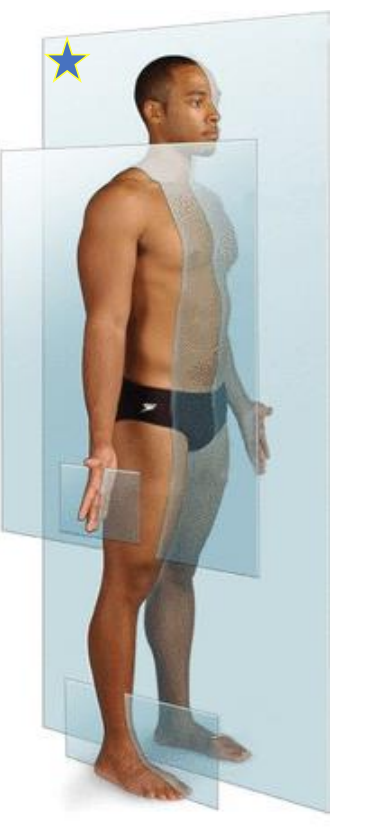
Sagittal Plane
Pass vertically, parallel to median
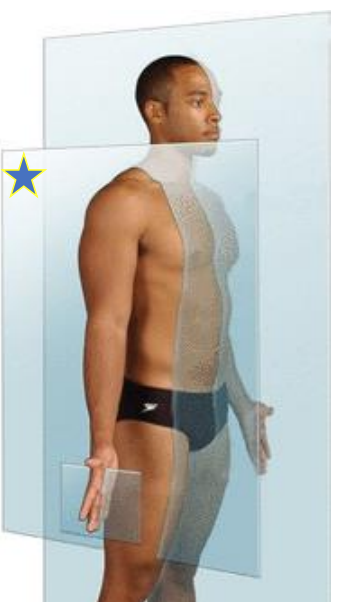
Frontal (Coronal) Plane
Pass vertically at right angles to median. Divides into anterior (front) and posterior (back)
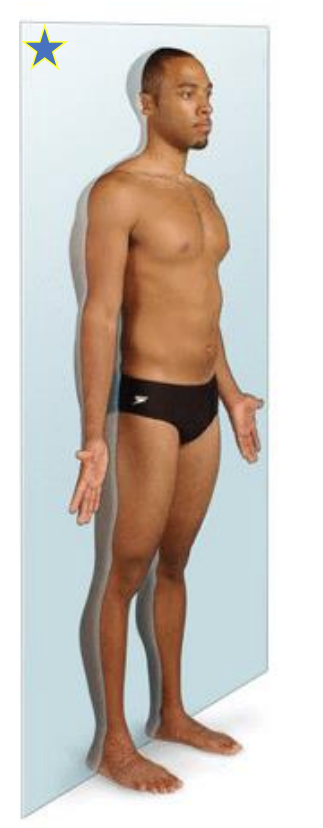
Transverse Plane
Pass horizontally. Divides into superior (upper) and inferior (lower).
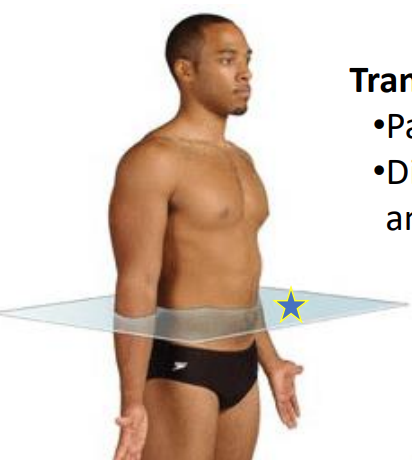
How to read axial / cross sectional image
Always as if you are looking at the patient.
Left side of image is patient's right side. Use the vertebral column to orient yourself.
Terms of relationship
Superior: Higher then
Inferior: Lower than
Anterior (ventral): Closer to front than
Posterior (dorsal): Closer to back than
Medial: Closer to median plane
Lateral: Farther from medial plane
Proximal: Nearer to point of origin
Distal: Farther to point of origin
Example: Wrist is distal to elbow, elbow is proximal to wrist
Superficial: Closer to surface
Deep: Farther from surface
Palmar: Front of hand/foot (anterior)
Dorsal: Back of hand/foot (posterior)
Digit 1 (thumb) is most lateral, digit 5 (pinky) is most medial.
Laterality
Bilateral: Both sides of body
Unilateral: One side of body
Ipsilateral: Found on same side of body to source of comparison
Contralateral: Found on opposite side of body to source of comparison
Movement
Flexion: Movement of limb anteriorly (towards front)
Extension: Movement of limb posteriorly (towards back)
Flexion at trunk is bending forward, extension is bending backward. Lateral flexion is bending trunk to the left or right.
EXCEPTION
At the knee joint, flexion moves the knee joint posteriorly and extension moves the knee joint anteriorly
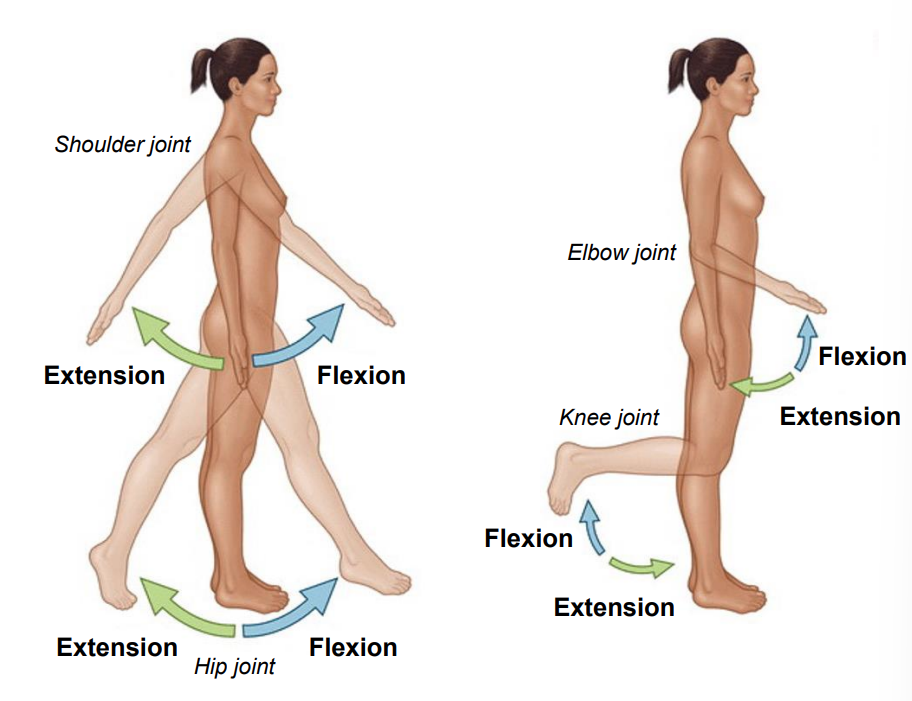
Abduction: Movement away from midline ("abduct" is to take away)
Adduction: Movement toward midline ("add" back to body)
Note: Moving closer to a reference is adduction, farther is abduction
Note: The center point on the hand is the middle finger (3) and on the foot is the 2nd toe. Abduction would be movement away from this midline.
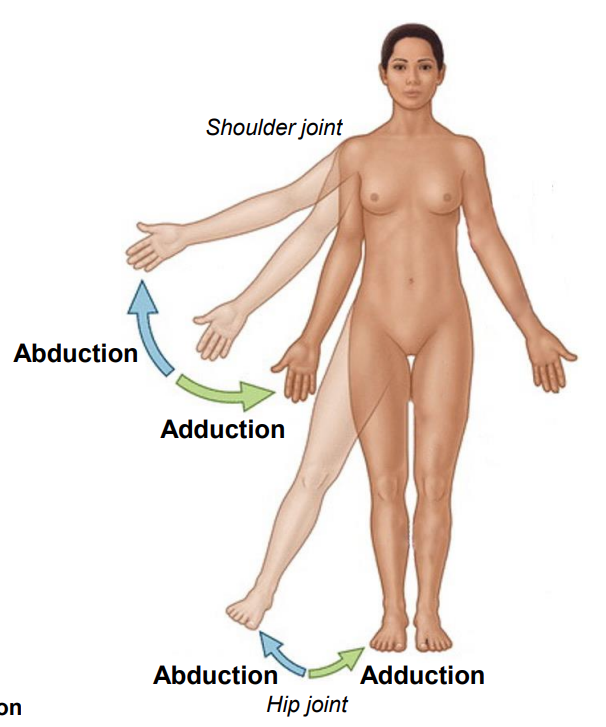
Medial (internal) rotation: Turning lib inward
Lateral (external) rotation: Turning limb outward
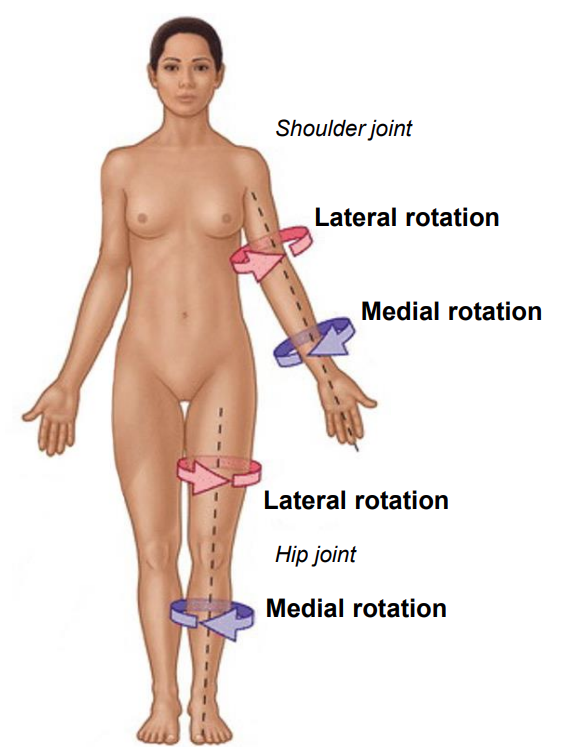
Pronation: Internal rotation of the forearm
Supination: External rotation of forearm
MEMORY TIP
Thumbs up is rad(ius)
Supination can hold a bowl of soup
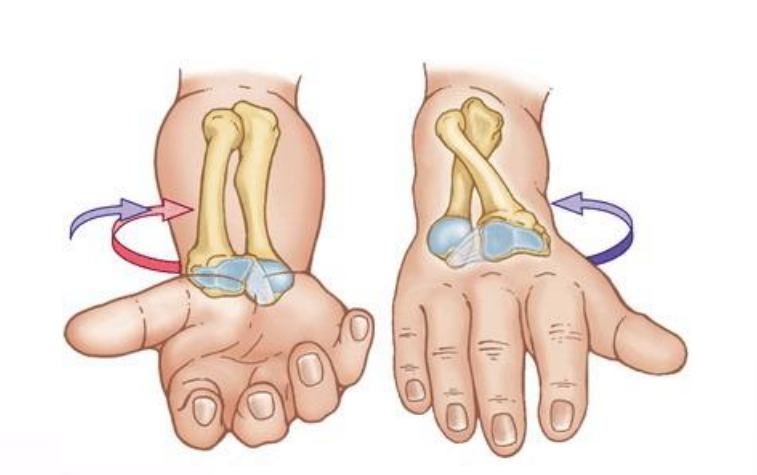
Dorsiflexion: Movement of foot upward (dorsal fin)
Plantarflexion: Movement of foot downward (tippy toes)
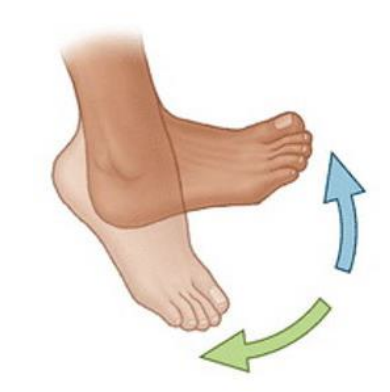
Inversion: Movement of foot inward
Eversion: Movement of foot outward
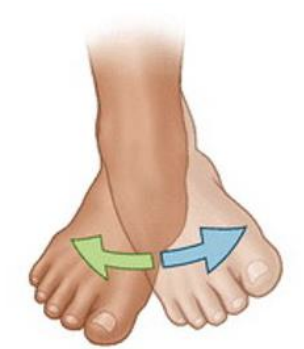
Musculoskeletal overview
Axial skeleton: Bones of head (skull), neck (hydroid, cervical vertebrae), trunk (rubs, sternum, vertebrae sacrum)
Appendicular skeleton: Bones of limbs, including pectoral and pelvic girdles
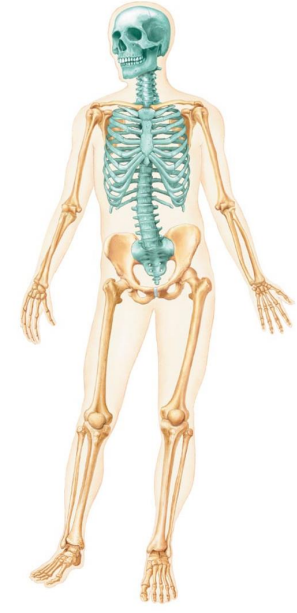
Upper limbs
Shoulder
- Pectoral
- Scapular
- Deltoid
The arm is the first segment if free upper limb
- Anterior compartment
- Posterior compartment
- Centered around humerus
The forearm is the elbow to wrist
- Anterior and posterior compartments
- Compartments overlay the radius and ulna
Hand is the distal segment of the upper limb
- Carpals
- Metacarpals
- Phalanges
Foot is the distal segment of the upper limb
- Tarsals
- Metatarsals
- Phalanges
Lower limbs
The gluteal region is the transitional region between the trunk and free lower limbs.
Thigh (femoral region)
- Anterior femur
- Posterior femur
- Medial femur
Leg connects knee and ankle
- Anterior tibia/fibula
- Posterior tibia/fibula
- Lateral tibia/fibula
Osteology
Body: Principal mass
Condyle: Rounded (knuckle-like) articular (rubbing) area
Epicondyle: Superior/adjacent to condyle
Crest: Ridge of bone
Facet ("fuh-cet"): Smooth flat area covered in cartilage for articulation
Foramen: Opening or hole
Fossa: Shallow depression
Notch: Indentation
Process: Projection or outgrowth
Tubercle: Small rounded projection
Trochanter (SPECIFIC TO FEMUR): Projection of proximal femur
Tuberosity: Roughened elevation
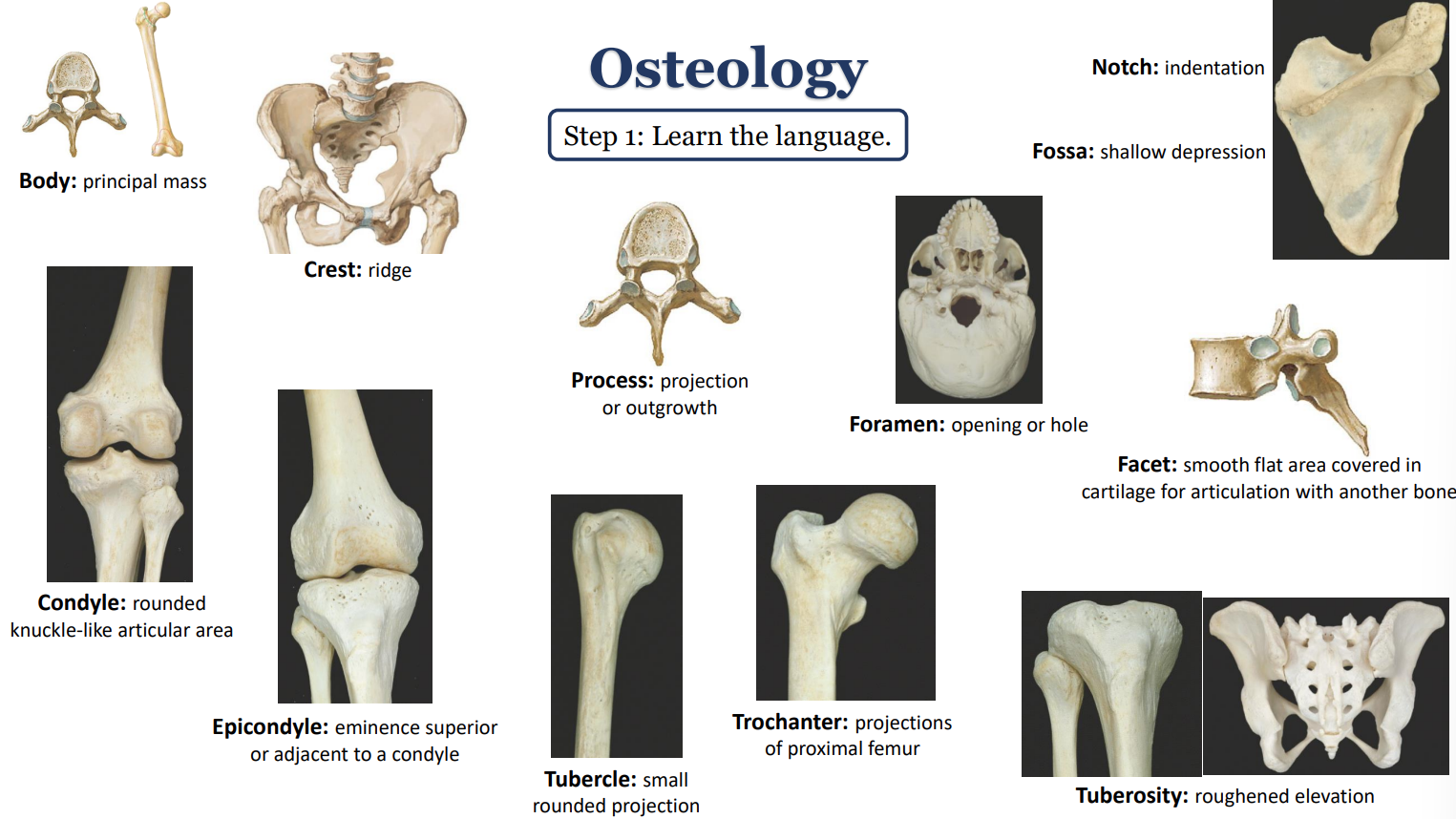
Join classification
Synovial joints (6 types):
- Ball and socket: rounded heat to concave surface
- Hinge joint: Permits movement along one axis (uniaxial: permits flexion and extension)
- Pivot joints: Also permits movement along one axis (uniaxial: screw)
- Plane: Glides or slides across a surface. Some bones on hands and feet are like this (but don't rotate)
- Saddle: Concave + convex surface, permits movement along two axis
- Condyloid: Two flat surfaces, permits movement around two axes (think finger bend joint)
Circumduction: To move around in a circle. Condyloids and saddles can do this
Skeletal muscles
Where muscles attach to bones
Origin (proximal): Typically found along stationary bone
Insertion (distal): Typically found along mobile bone
If it crosses posterior to joint (e.g. elbow), you're going to get extension
Fascia
Sheaths, sheets, or or dissectible connective tissue. Responsible for prevention of infection
Superficial fascia: Is subcutaneous
- Loose connective tissue
- Thickness varies
Deep fascia: Is investing
- Under superficial fascia
- Dense and organized
- No fat
- Will sometimes "dive" to deeper organs like muscles and neuro bundles